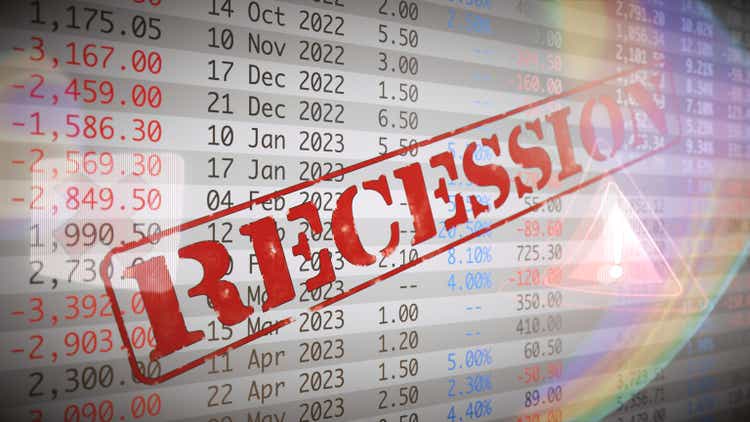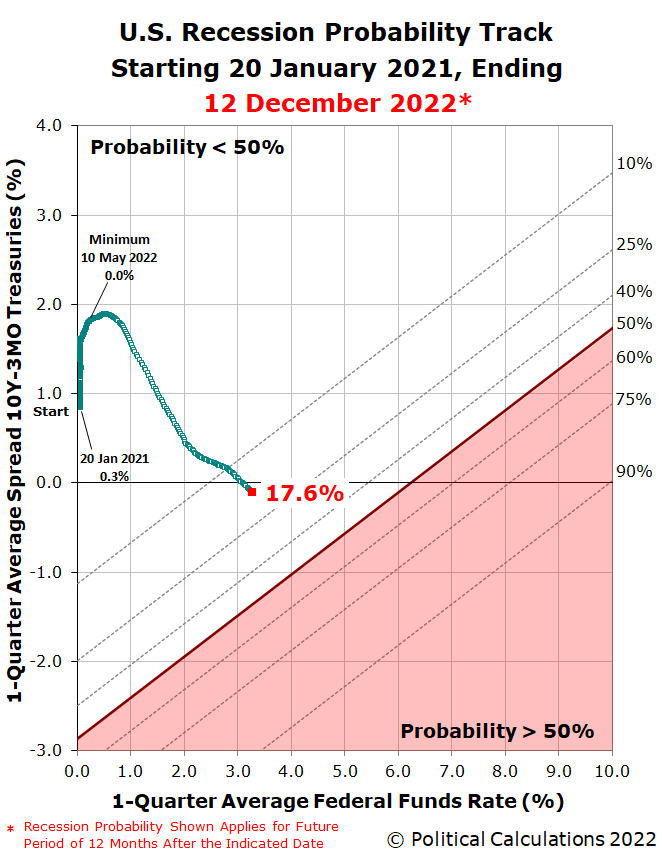matejmo
When will the analysts at the National Bureau of Economic Research say recession started?
That question is double-loaded. Read one way, it’s asking on what date will the NBER’s economists get around to acknowledging the U.S. business cycle stopped expanding and started contracting. Given their track record, the only definitive answer to that question is “months after it already happened”.
Read the other logical way, it’s asking when did the U.S. business cycle actually stop expanding. We don’t have a definitive answer to that question either, but in this case, at least we can give you a probability based on historic data of how the Fed has set the Federal Funds Rate and the yields of the 10-Year and 3-Month constant maturity U.S. Treasuries. Based on data available today, the probability they’ll narrow it down to falling within the twelve months from December 2022 to December 2023 is 17.6%, which is consistent with what we projected several weeks earlier. In terms of odds, that’s better than 1-in-6 and rapidly heading toward 1-in-5.
The newest update to the Recession Probability Track shows how that probability has evolved since our last update in November.
Author
Assuming the Fed follows through on hiking the Federal Funds Rate by another 0.5% tomorrow, the probability will resume rising rapidly. Doing some back-of-the-envelope math using our recession odds reckoning tool, with the 10-Year and 3-Month Treasuries as inverted as they are today, the odds of recession will rise higher than 1-in-3 by the time of the Fed’s next interest rate-setting meeting on 1 February 2023. Should the Fed announce yet another rate hike on that date, the probabilities will only rise higher.
Before we close, we want to point out that the question we’re answering with this analysis is different from “is there a recession now?” or “will the U.S. be recession in 2023?” The answer to these questions is “perhaps” and “yes”. For the first question, there are clearly building levels of distress in several sectors of the U.S. economy, but we cannot yet say the scale, scope, or severity of this distress has risen high enough to qualify as a national recession according to the standards of the NBER’s economists. On the second question, 98% of CEOs surveyed by the Conference Board say they’re preparing for a U.S. recession in 2023. Unlike the NBER’s analysts who are insulated from dealing with deteriorating business conditions, CEOs can’t afford to leisurely dawdle about when decisions about how to deal with rapidly changing business prospects need to be made.
Editor’s Note: The summary bullets for this article were chosen by Seeking Alpha editors.


Be the first to comment